Your donation will support the student journalists of West High School. Your contribution will allow us to purchase Scholarship Yearbooks, newsroom equipment and cover our annual website hosting costs.
Viral.
WSS examines the effects of the novel coronavirus at a local level.
April 23, 2020
Halfway across the world, the impact wasn’t immediate. It all started in late December, when a few individuals in Wuhan, China were diagnosed with pneumonia from an unknown cause. As cases spread throughout the world and death tolls soared, on March 11 the World Health Organization (WHO) declared it a global pandemic. Eventually, the virus reached Iowa City. By then, scientists had given the ominous new threat a name: the coronavirus disease 2019, or COVID-19.
Clearing the air
Because of the mysterious nature of COVID-19, medical professionals have had a hard time finding out more about the virus, and how to combat it. Meanwhile, hysteria and misinformation were spreading.
Referring to COVID-19 as the ‘coronavirus’ can be misleading because there’s more than one type of coronavirus, which is an umbrella term for a category of respiratory diseases. Other branches of the virus, such as SARS (Severe Acute Respiratory Syndrome) and MERS (Middle East Respiratory Syndrome), have been around for much longer. They were discovered in 2002 and 2012 respectively.
Dr. Stanley Perlman, a professor of microbiology and immunology at the University of Iowa, has been studying strains of coronavirus for years. What sets COVID-19 apart is that it’s far more difficult to detect.
“[SARS and MERS are] both really deep lung diseases, so you weren’t contagious until you were pretty sick. This virus is different because it’s much more contagious … and much more lethal,” Perlman said. At first, the media and the public compared COVID-19 to the flu, saying that the flu kills more people each year and there’s no need to worry about it. Even now, many dismiss health warnings because it doesn’t affect them.
Teenagers and children often experience only minor symptoms, such as a cough, runny nose or fever. This leaves older adults and anyone who is immunocompromised, or those who have impaired immune systems, at risk.
Lila Terry ’20 has a family member currently undergoing chemotherapy, which severely limits the body’s ability to fend off infection. COVID-19 directly affects her, and there’s no opportunity to dismiss it with a family member at risk.
“[It’s difficult] hearing somebody say ‘Oh, it’s not going to affect me; it’s just a glorified cold.’ That may be a glorified cold for you, but for the person in my family it may be deadly,” Terry said.
For Terry, it can be offensive to hear the remarks people are making about the virus and the populations it can affect, and she attributes the comments to ignorance.
“They’re acknowledging that there’s a group of people who this is going to affect negatively, but because they’re not in that group of immunocompromised people, they don’t care,” Terry said.
Drew Peterson ’21 is part of that immunocompromised group. He was diagnosed with Type 1 diabetes in September, which is an autoimmune disease that affects insulin production.
Because of this, Peterson and his family have limited their contact with the outside world to ensure the virus does not reach their home.

“I’m doing my best to avoid people and that’s really all I can worry about, so I’m not letting it freak me out too much,” Peterson said. “I still do stuff outdoors and I try to maintain six feet from people when I’m outside.”
It wasn’t until Peterson saw a tweet about somebody’s symptoms that he realized the unique risk the virus could pose due to his condition.
“[They] couldn’t keep food down for nine days,” Peterson said. “That made me a little worried because if I can’t eat then my blood sugar will be low, and I need to keep that up or else I might pass out.”
Since Peterson was only recently diagnosed with diabetes, his family is unaware of how he would react to any common illness, let alone COVID-19.
“I haven’t been seriously sick since I got diabetes so we don’t know what having the flu would do to me,” Peterson said. “Having this unknown pandemic go around the world is even more scary.”
More recent data has shown that COVID-19 isn’t just scary for those who are immunocompromised or high risk. The virus affects a larger percentage of the population than one would have initially believed. According to the WHO, the mortality rate of COVID-19 could be as high as 3-4%.
That’s about the same mortality rate as the flu in 1918, the most severe global pandemic in recent history and one of the flu’s most deadly years. At that time, there was no vaccine for the flu, just like with COVID-19 today. According to Perlman, because of these similarities, COVID-19 and the measures to prevent it shouldn’t be dismissed as unimportant.
“If you have 3% mortality and the disease starts becoming common, that’s a big deal,” Perlman said.
Iowa has seen the impact firsthand. According to the Iowa Department of Public Health, as of April 23, there were 3,748 confirmed cases in the state. These numbers can be frightening to look at, but there are ways to slow the spread of the virus.
This is often referred to as flattening the curve, meaning limiting the number of people who might get infected at any given time. This is important as a large number of cases could overwhelm the healthcare system.
Thorough handwashing, refraining from touching the face and sanitizing frequently-used possessions are all ways individuals can help stop the spread of the virus. However, according to the Centers for Disease Control and Prevention (CDC), social distancing is the one of the most important ways to keep others safe.
On April 3, the CDC recommended that when going outside, people wear face coverings. Hand-made cloth masks are simple to make, and only require an old t-shirt.
It’s important that the public hand-make their own masks, as hoarding of medical-grade masks can leave hospitals out of supplies. This exposes medical staff and makes it dangerous for them to treat patients, and even go home to their families.
Sophomore Reagan Yamashita’s mother works in a nursing home, where the majority of residents are at very high risk of being affected by the virus. At the same time, Yamashita’s brother has a telomere biology disorder which, among other things, makes his lungs weaker.
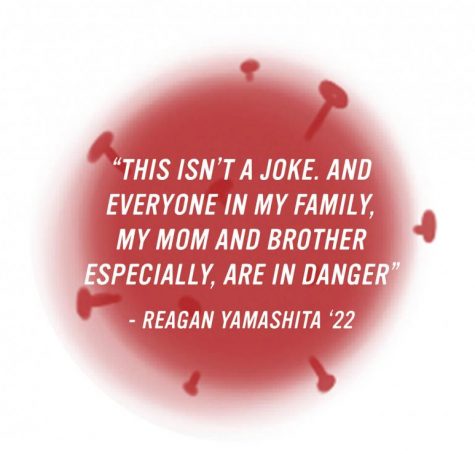
As a respiratory disease, COVID-19 largely affects the lungs, meaning he’s at an even higher risk of complications. Because of this, Yamashita and her family have to follow a lengthy list of precautions.
“Every time you enter the home you wash your hands and change clothes,” Yamashita said. “My mom has started wearing a mask around the house. We aren’t allowed to touch her or enter her bathroom. If she starts treating infected patients, she will have to live in the basement.”
For Yamashita, it can be frustrating when people dismiss the dangers of the virus and don’t take the necessary precautions.
“It makes me so angry I can’t even begin to tell you,” Yamashita said. “It is estimated that between 100,000-250,000 Americans will die before this pandemic is over. This isn’t a joke. And everyone in my family, my mom and brother especially, is in danger.”
Far away
Before COVID-19 hit Iowa City, there were outbreaks all over the world. The virus started in Wuhan, China, where residents were quarantined for 76 days. Mr. Jia* lives in Wuhan, and took careful precautions throughout the quarantine. He is choosing to remain anonymous due to concerns about making statements to the media that might be screened by China’s government.
The most difficult aspect of being stuck inside for Jia was the effect it had on his personal life. Jia’s grandchildren go to West High, and because of the quarantine, he can’t visit them, nor any of his other friends or relatives.
“Before the quarantine we had more outdoor activities, such as meeting and chatting with our neighbors and colleagues, going shopping, doing some physical exercises and hiking,” Jia said. “All the above in our daily life cannot be conducted after the quarantine. We have to stay at home nearly all day long.”
Although the disease originated in China, other countries such as France have been hit hard in recent months as the pandemic spread.
Kat Hagan ’19 graduated early last year to complete a Rotary Youth Exchange in France. She is currently staying with her third and final host family in the small rural town of Bourganeuf.
The novel coronavirus disrupted the final months of her stay. After a Rotary-organized parent meeting, Hagan decided it would be safest for her to remain in France, avoiding airports and public transportation.
The country began its quarantine on March 13, and the country is completely shut down until at least May 11.
“Before this whole coronavirus thing, my exchange was going pretty great. I got to learn a new language, I got to meet a lot of new people, eat new foods and be introduced to a completely new culture,” Hagan said. “I was having a great time, but it’s hard now to stay inside all the time.”
For French residents to leave the house, they must have an official document listing the reason they are outside. Without this, they face a 100 euro fine. Hagan is thankful to go on walks, one of the few acceptable reasons to go outside.
“When I arrived in France, it was really hard. I went through culture shock and it was weird to be seperated from my family at 17 years old … When the coronavirus started, it kind of brought that feeling back for me,” Hagan said. “It’s made me stressed, it’s made me homesick. It’s given me some anxiety just about being away from home during a situation like this.”
Because the virus was spreading fast, on April 15, her Rotary district made the decision to send all exchange students home.
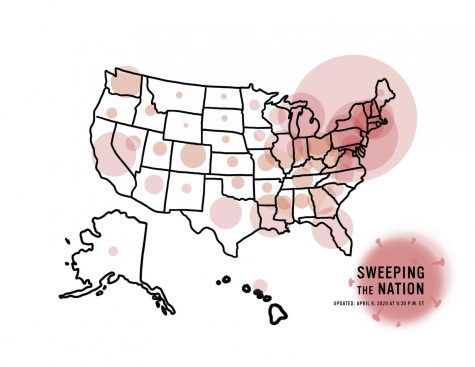
Coronavirus cases in the U.S. as of April 6, according to CNN.
On the other side of the equator, Paige Albright ’23 was also stuck inside. Albright and her family traveled to Peru for spring break. While on their trip, they were informed about quarantine measures being put into place: if they didn’t leave the country in 24 hours, Albright and her family would be quarantined in Peru for at least 15 days.
“When we were trying to … fly out, we were like, ‘We could fly to Chile, or Panama,’ because that’s where we came in,” said Albright. “But Panama had closed their borders. Chile closed their borders. Ecuador [at the time had] just closed their borders.”
In the mad rush for a place to stay, Albright was lucky to have had a hotel room.
“There [were] still around 100-200 people stuck in the airport because they closed everything down at midnight [the day before]. They weren’t able to get a taxi or hotel room to leave,” Albright said.

Despite the health risk, travelers had nowhere else to go. Approximately a week after the quarantine was enacted, those stuck at the airport were bussed to nearby hotels. Once the quarantine was over, Paige and her family were able to make it back to Iowa City.
For Hagan and Albright, the virus and restrictions have caused an unprecedented amount of stress. The pandemic led to the cancellation of many activities Hagan was looking forward to such as a Rotary conference, a two week bus trip and her parents’ visit at the end of May.
“The end of every exchange is usually the best part,” Hagan said. “It’s when your language skills are the best so you get closer to people because you can communicate more… For me, it’s just been kind of a bummer that this is happening now.”
*A source in this story has been given an alias as they chose to remain anonymous.
Locally
When the first three cases of COVID-19 in Iowa were announced, panic set in. It had finally hit Johnson County.
But weeks before the virus arrived in Iowa City, it seemed like it would never affect the country, let alone the community. Because of this, activities such as the semi-annual orchestra trip to Florida continued as planned.
“At the time it was still kind of a distant threat to most people, it didn’t seem that dangerous even though it probably was and we probably shouldn’t have gone,” Julian Wemmie ’20 said.
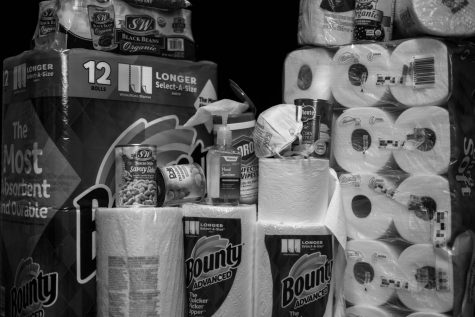
A stockpile of essential household items represents an increase in consumption during the COVID-19 pandemic, which has caused shortages of certain items.
When they got back, they were strongly advised by the school to self-quarantine. Wemmie stresses the importance of following those guidelines.
“The sooner people will self-isolate and socially distance, the fewer people that are going to be affected and the better we can manage this whole pandemic,” Wemmie said.
Businesses all around town were temporarily shut down on Tuesday March 17, when Iowa Governor Kim Reynolds announced that there could no longer be gatherings of more than 10 people in a given place. This meant all restaurants, gyms and theaters were to be closed due to the virus.
The closure of local businesses meant a loss of income for students with jobs. While many restaurants still offer takeout, staff numbers have been cut drastically. Kearsten Lenth ’22 works at 30hop, a local restaurant. The closure doesn’t just affect her, but her whole family.
“My siblings are in more need of the money. I have three other siblings that work there,” Lenth said. “Two need money for rent and the other, my sister Mikaley [Lenth ’20] needs the money for college.”
Meanwhile, families who own businesses have struggled as well. Claudia Chia ’20 and her family own Sushiya in North Liberty. Being primarily a sit-down restaurant, they’ve been hit hard by the transfer to take-out only.
“The business’s sales has dropped more than 30%. The impact on our family is small but we need to lay off many employees. It is very sad,” Chia’s mother, Li-Kuei Chiou said. “The food chain has been affected and it is hard for us to get some food supply, and the cost has increased … When the cost keeps increasing, it is hard for the business to stay open.”
The family has been working hard to ensure customer safety by enacting new policies such as curb-side pickup, where customers can pay without physical interaction. There have also been other safety adjustments, such as a guest facing credit card reader and giving new pens whenever customers have to sign.
Despite the challenges, Sushiya has made sure to give back in this difficult time by donating money to a local food pantry.
“My parents are busy working hard from the time they wake up to when they go to sleep. They both have definitely been working harder to help the business and taking the necessary precautions to make sure everything runs smoothly,” Chia said.
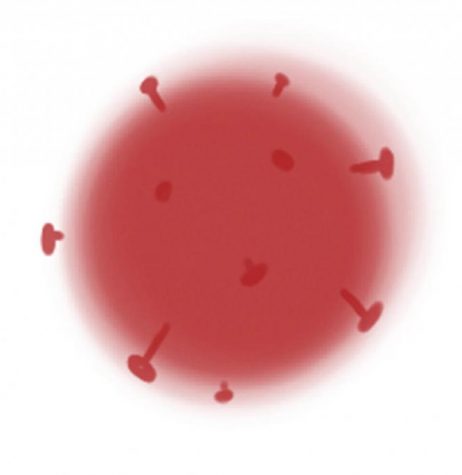
Besides businesses, the medical community has been affected by the lack of supplies, long hours and time spent away from family.
Junior Carly Norris’ parents are both medical professionals: her dad, a pediatric endocrinologist at the University, and her mom, a family physician at the Free Medical Clinic. Due to the contagious nature of the virus, the family made the decision to isolate themselves from each other to stop the spread by living in separate parts of the house.
“They are taking the quarantine very seriously. If I go out and I carry the virus back home to them, it would be very bad, because then they could have the possibility of spreading it to their patients,” Norris said. “They were also worried about me because they are in contact with a lot of people.”
Due to the pandemic, Norris’ parents had been spending most of their time at work, which left her feeling lonely. To combat this, she’s been staying at junior Gwen Watson’s house.
“Before I moved to Gwen’s it was so hard because my history of anxiety and depression — when it’s at its height is when I get lonely,” Norris said. “I’m doing a lot better now that I’m living there, it’s like a thousand times better.”
 Both of junior Jacob Gehlbach’s parents work as physicians, so he has also experienced changes in his living situation. His father is staying in the family’s basement to avoid contagion ever since he contracted a cold.
Both of junior Jacob Gehlbach’s parents work as physicians, so he has also experienced changes in his living situation. His father is staying in the family’s basement to avoid contagion ever since he contracted a cold.
“If you get corona with a cold, it’s just going to be more to try and fight off, and he doesn’t want to go into work with a cold so that people will worry about it,” Gehlbach said. “So that’s why he was downstairs, he didn’t want to give it to any of us.”
Although his parents are not yet taking care of COVID-19 patients, according to Gehlbach, when the virus worsens they most likely will.
“The reason that they decided to do things the way we are doing it is to flatten the curve,” Gehlbach said. “The precautions we are taking are a form of doing that, especially if they are going to be working in the hospital with patients who could be sick, then it’s even more important that we are careful.”
Besides impacting the economy and health in the community, the virus has perpetuated racism throughout Iowa City. As a Chinese American, Zoey Guo ’22 has experienced discrimination due to the virus and her race.
“Sometimes at West when we were still going to school I’d hear people talk about the coronavirus and get mad at China because a lot of their trips were canceled,” Guo said. “I can tell that people would stare at me sometimes in the hallways or move away from me.”
Guo was also frustrated when she heard President Trump refer to the coronavirus as the Chinese virus.

“People are already discriminating against the Chinese because of the coronavirus,” Guo said. “The fact that the President of the United States is also encouraging that, I just feel a little unsafe.”
Outside of West, Guo’s sisters have experienced discrimination in the medical field. According to Guo, staff members have racially stereotyped them as having the novel coronavirus.
“This hasn’t just impacted me, it’s impacted my whole family,” Guo said. “I know my sisters are both responsible … they are taking the necessary precautions to stay sanitary and I just feel like it’s not fair for them to get stereotyped just because they are Chinese, even though they are doing what everyone else is doing.”
Here at West
On March 15 Superintendent Steve Murley sent an email out to teachers and parents announcing the ICCSD would be closed until April 13. The decision, he said, did not come as a surprise to most.
“I think people expected [school closure] at that point in time,” Murley said. “They’d seen the closures happen in other states, so I think that there was some anticipation that we were moving in that direction here.”
What came as a surprise to many however, was that school closure meant no required education, online or otherwise.
“The programming that we offer has to be accessible to all kids, and that certainly is a challenge for us,” Murley said. “We’ve been working with the state to better understand what their expectations are for us to provide free and appropriate public education.” 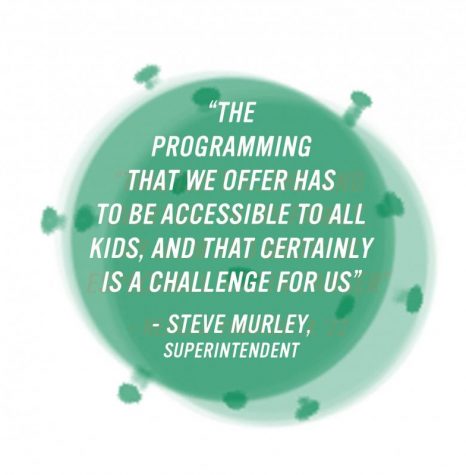
Gov. Reynolds extended school closures until the end of the year on April 17. This extended time away has left many vulnerable, not only to those who previously received free and reduced lunch, but to those who were losing their jobs.
In response, the district began offering 16 meal pick up sites in locations that best met the needs of the community. Meals offer a full breakfast and lunch.
According to Nutrition Services Director Alison Demory, sites are chosen based on the community’s need, and 20,232 meals were served by the end of the third week.
“We know there are many students in the community who count on school breakfast and lunch and we wanted to make sure that was still available for our most food insecure,” Demory said.
As for education, schools must be accredited in online instruction in order to provide online courses to students. A process that, according to Murley, can take up to two years.
“Obviously, we do not have two years to get things up and ready for kids, so if the Department of Education holds us to that standard that puts us in a position where we have very little flexibility to offer online learning to students during this closure,” Murley said.
To combat this issue a task force has been put together by the Department of Education composed of educators from around the state.
“We hope that the outcome [from the task force] is that they will provide guidance to us on how we can provide online learning opportunities to students that may not require us to go through that full accreditation process,” Murley said.
School closures and state guidelines have forced teachers to get creative with methods of online enrichment activities.
“The faculty has been ready and willing to do whatever they are asked, including learning new skills in order to provide students both academic learning and social emotional learning,” said Principal Gregg Shoultz.
For now, faculty is corresponding with students once a week via the video conference service, Zoom. The guidelines for teacher-student correspondence, however, changes by the week.
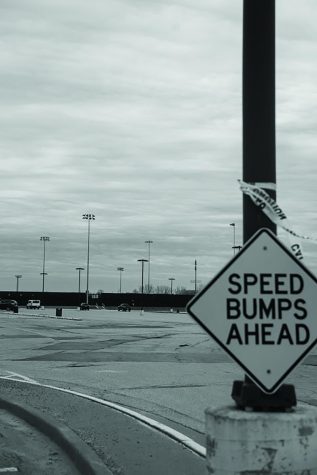
The back parking lot, usually filled with activity of students and athletes, sits vacant due to school closure and the cancellation of spring sports.
At first, teachers recorded Zoom meetings to be posted online later. However, because of the unreliable technology that could unintentionally record what is happening in students’ homes, and some behavioral issues on the platform, this is no longer allowed. Teachers are now asked to use Screencastify to record lessons and upload them online.
“Although the Zoom technology is very good, it was developed for the business world and not the world 14 to 18-year-olds inhabit,” Shoultz said. “While almost all of the West High students have been great, we have had some students take advantage of the open nature of Zoom.”
Stacy Noble, who teaches AP Government, strives to support her students with check-in emails.
“As far as reaching out to students, I think it is important they know we are still here,” Noble said. “My emphasis has been about [their] well-being and safety, and that continues to be the case, even as we’ve added moving forward with content.”
Noble has received varying responses on how students are feeling.
“I have heard from some that do find it difficult to concentrate on school, while others have said diving into the work has been helpful in providing a structure,” Noble said.
Despite varied opinions on voluntary learning, according to Murley, if they do not find an alternative education method, it could have severe consequences on students’ education.
“If we’re not able to provide education for kids … we’re going to have a learning gap that takes place. One of our significant concerns is that some of our students with the greatest educational needs will suffer the most under this scenario,” Murley said. “We’d really like to see some level of flexibility by the state when it comes to giving us options to provide online learning to students.”
Alexandra Curtu ’22 is also concerned about a potential learning gap for next year, but thinks teachers are handling it well so far.
“I think West High and the ICCSD are doing the best they can to handle the situation and I appreciate my teachers saying they will post study tools to help us, because a few of my classes are prerequisites for AP classes I want to take next year, and there is still a trimester of information that I need to know,” Curtu said.
Others have been impacted by the cancellation of the ACT. Izzy Paulsen ’21 had a plan to study six weeks leading up to the exam. She only got through the first three when COVID-19 began to spread, and the test was canceled.
“When I heard the ACT was going to be canceled, I was super disappointed because I had already put in so much work and now there will be less chances to get my score up if I am unhappy with the score I get,” Paulsen said. “That being said, I also knew that it was a necessary measure in order to prevent the spread of coronavirus.”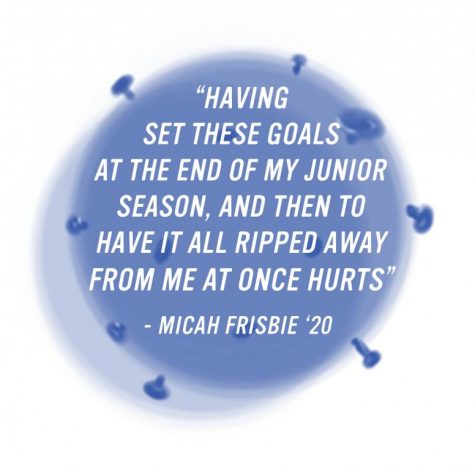
Not only that, but the class of 2020 is missing out on their final high school memories and milestones such as a traditional prom, senior sports season or even graduation.
“As a senior, I’m devastated that I don’t get to do the things every other senior has gotten to do,” Chia said. “I understand our problems seem minuscule to other problems around the world. However, these are things every senior looks forward to after four years in high school. Everyone needs to be aware of the other problems around us but us seniors should be allowed to feel bad about this too.”
Micah Frisbie ’20 is also missing out on some of his goals as a senior on the soccer team, such as making First-Team All State, as well as refining his leadership skills.
“I was actually excited to feel the pressure of being a senior and knowing that not only the team, but coaches and even our fans, know us seniors are the big leaders on the field,” Frisbie said. “Having set these goals at the end of my junior season, and then to have it all ripped away from me at once, hurts.”
Despite all the challenges during this troubled time, ICCSD administrators believe it’s crucial for the community to band together.
“I think more now than ever it’s important that we stay together as a district,” Murley said. “Even though we are social distancing, I’m encouraging people to find ways to connect with others so they don’t lose that social emotional bond that really is such a strength of the district.”
Coping
Social distancing is an important part of stopping the spread of the novel coronavirus, but according to the CDC, isolation and potential stress caused by the pandemic can take a severe toll on mental well-being.
“I have no hard data but I truly believe that there are many students and even staff in our West High community that are  struggling to cope with the feelings of isolation, depression, anxiety, anger or other types of stress and do not have the support systems in place that they may need or want,” said Special Education teacher Rick Hancox.
struggling to cope with the feelings of isolation, depression, anxiety, anger or other types of stress and do not have the support systems in place that they may need or want,” said Special Education teacher Rick Hancox.
In the face of all the fear and anxiety that comes with this period, students and teachers have been working hard to stay positive and spread joy.
During a regularly scheduled school week, Hancox leads circle talks: structured conversations designed to promote connection, understanding and dialogue within a group. Now that school has gone optional and digital, so have circle talks. Hancox has conducted six since the beginning of quarantine.
“Human beings are social creatures and the need for human contact and communication is important for our mental and emotional health. In this unusual time of forced isolation and social distancing it is important to continue to connect with people as much as possible,” Hancox said. “Circle, even a virtual circle, provides the space for everyone to speak, express themselves and to be heard.”
Teachers at West have also been using social media to stay connected with students. On March 26, the science department posted a compilation of teachers waving to students as they go throughout their day in quarantine. Jenny Eustice, who teaches AP Biology, started the challenge at West.
“An acquaintance of mine, and friend on Facebook, is a video production teacher on the East coast. He and his friends made a similar video in early quarantine and shared it on social media,” Eustice said. “We are a really big staff at West, so I wasn’t sure I could manage getting everyones videos, but departments seemed manageable, and I thought it could be fun to ‘challenge’ other departments as well.”
After the science teachers posted their video, other departments at West accepted the challenge, with waving videos from the English, math, social studies, ELL and special education departments.
For Eustice, spreading positivity and remaining calm is important.
“I have two young kids, and if I am running around scared, nervous, and upset, they really feed off of that, so I have to maintain positivity to help them keep a sense of normalcy,” Eustice said. “I also think that the people in positions of influence: teachers, coaches, leaders have a huge responsibility in how they react when things go wrong. Are we looking at this as a challenge or an opportunity? A simple shift in mindset can do wonders.”
However, with all the cancellations of events due to the spread of COVID-19, sometimes keeping a positive outlook can be difficult. Kaitlin Lamkins ’21 was already getting ready to pack for her first time out of the country, the annual school trip to Spain, when she found out the foreign language trips had been postponed.
“I really wanted to be able to see Spain because my mom graduated from West and went on the trip when she was in high school, so I wanted to see it too,” Lamkins said. “We were going to see a lot of the same places so it would have been really cool.”
There are two options for Lamkins, and many others whose trips have been canceled: contact the travel agency and attempt to get their money back, or go on the trip next year. As of now, Lamkins is still deciding what to do.
“I could tell the trip would have been really weird and different,” Lamkins said. “This way it gives us a chance to go when things are really good again.”
While Lamkins was getting ready for her flight overseas, Raymond Yang ’20 was preparing to run the marathon he had been training for for months.
“The consequences of it never really hit me until a couple hours later, I realized like four or five months of training had been basically wasted,” Yang said. “And so, after that, I basically just lost all motivation to do not only running but schoolwork, just basic activities during the day.”
Upon hearing about the cancellation, Yang was ready to give up, but his friends wouldn’t let him. They set up a time and biked alongside Yang as he ran a solo marathon in Iowa.
“When it did happen, my track friends texted me like ‘You’re not gonna get away with this. We’re gonna make sure you run it. You’ve been working for so long. You deserve some kind of credit for it,’” Yang said.
Others have been working to keep a positive outlook by offering help to those in the community that need it most. Monica Leo founded the local Eulenspiegel Puppet Theatre in 1974. Since COVID-19 hit, she’s been making masks for the community with a unique twist. Leo makes her masks out of puppet and doll-making material.
Leo had originally planned on donating her masks to the hospital, but regulations requiring masks be made in a pet and dust-free environment prevented her from donating. Instead, Leo has been handing out masks throughout the community.
“We’re all responsible for each other, so whatever we can do to help each other out is important. ‘No man is an island’ as they say,” Leo said. “It’s important to stay as positive as you possibly can. Lift your own spirits.” 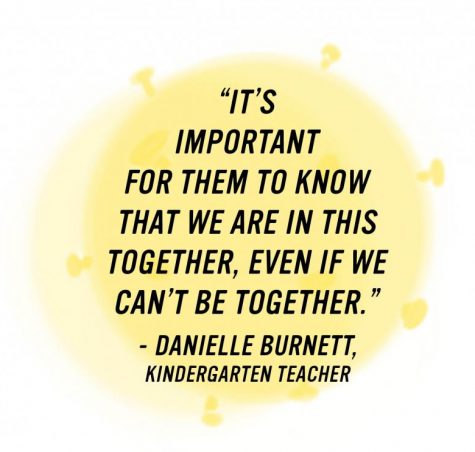
In the spirit of positivity, Danielle Burnett, a kindergarten teacher at Wickham Elementary, suggested and helped plan a staff car parade in the school’s surrounding neighborhood. Teachers decorated their vehicles and honked their horns, in order to obey social distancing guidelines.
“We had a wonderful turnout. Many families were sitting outside waiting for us and had signs ready,” Burnett said. “Students were very excited to see us; I think some of them were a little shocked to see their teachers out in public.”
Burnett believes it’s important to send a unified message of positivity to the community.
“It showed our students that we care deeply about them and that we are a community of learners both inside and outside of school,” Burnett said. “It’s important for them to know that we are in this together, even if we can’t be together.”


